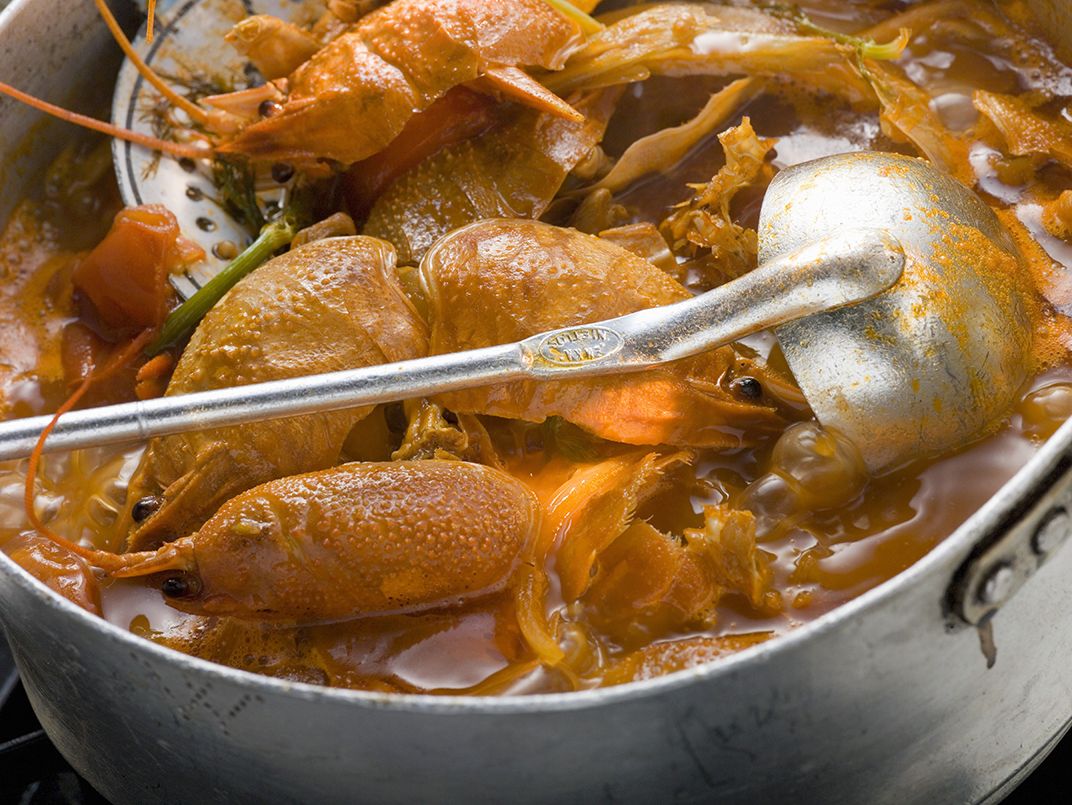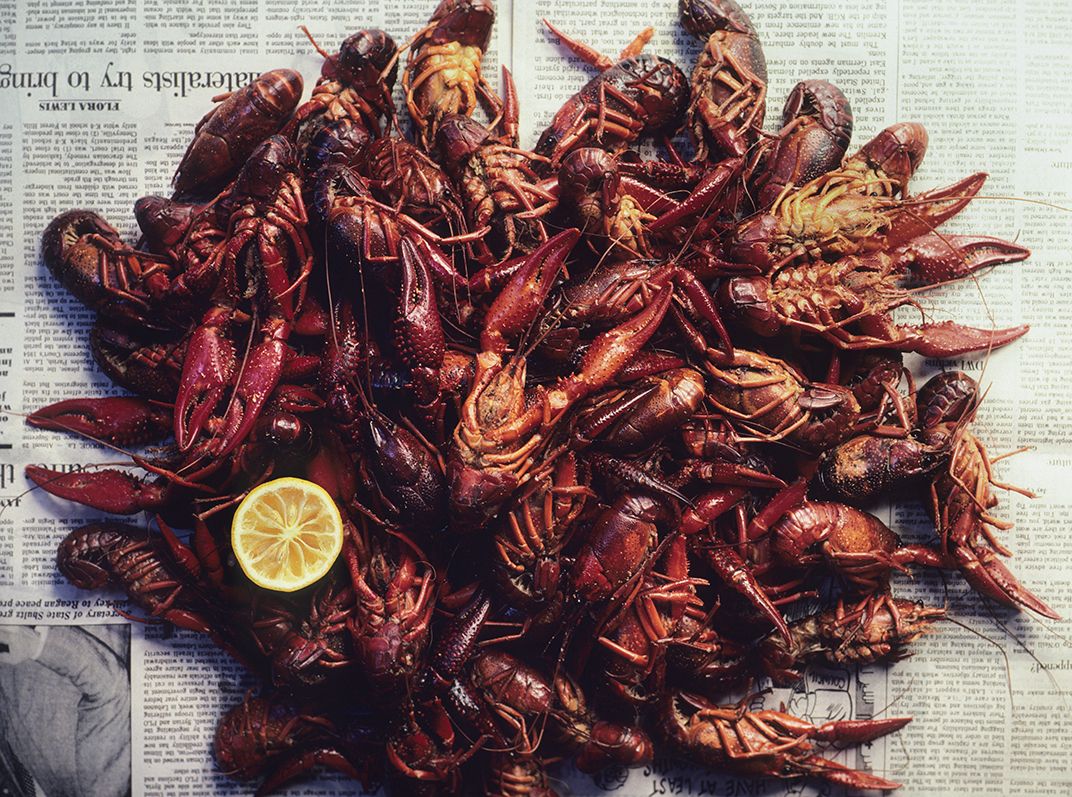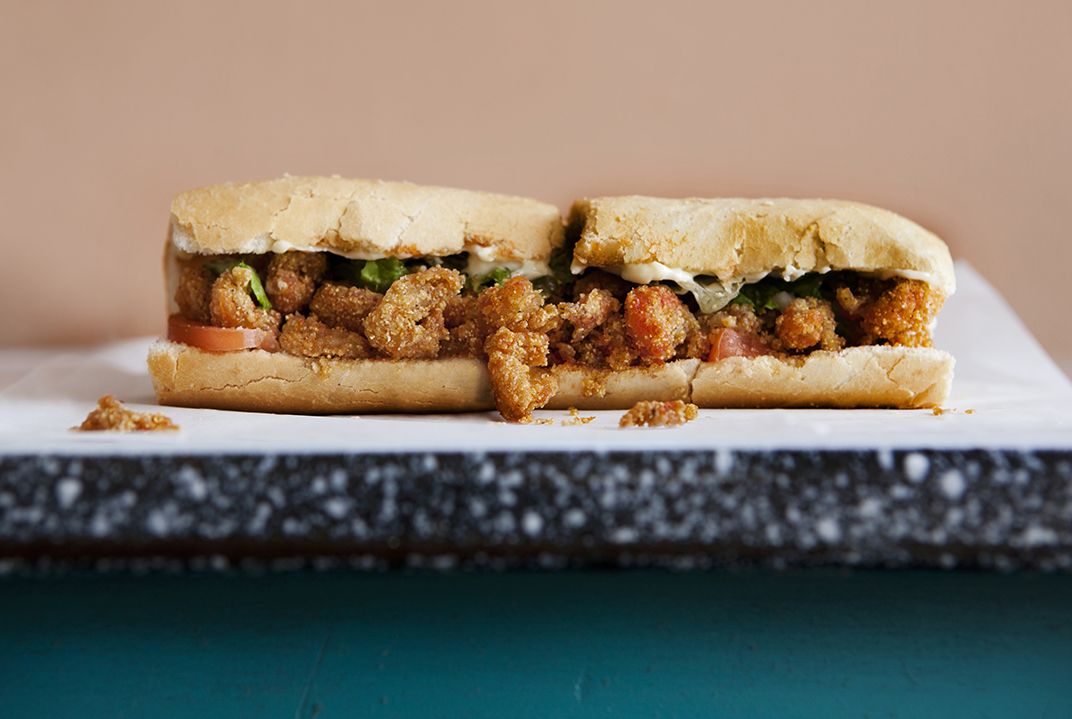Why Crawfish Are Louisiana’s Culinary Gift to the Nation
What makes the crustacean a springtime treat, whether its in gumbo or an etouffee
When Cajuns have a longing for something, they describe it as “catching an envie.” Louisiana author Sam Irwin catches an envie for crawfish often. These edible crustaceans—alternatively known as crayfish, mudbugs, and crawdads—resemble baby lobsters but are an entity all their own, as Irwin can attest. A native of Breaux Bridge, Louisiana—the 'Crawfish Capital of the World'—Irwin grew up in the crawfish industry. He worked in his family's crawfish plant in nearby Henderson (“the epicenter of fresh crawfish,” he says), and later served as press secretary for the Louisiana Department of Agriculture and Forestry, which deals directly with crawfish promotion and research. Irwin knows the history, culture, and stories surrounding the state's multi-million dollar crawfish industry inside and out—a knowledge he shares in his latest book, Louisiana Crawfish: A Succulent History of the Cajun Crustacean.
Louisianians devour hundreds of pounds of the crustaceans at crawfish boils held throughout spring, pulling them apart by hand to get the most meat from the tails, legs and bodies, and then seasoning it with hot sauce, lemon or butter. They add peeled tails gumbo, bisque and stew, and even honor the favored critter with festivals statewide such as the Breaux Bridge Crawfish Festival, the annual celebration that includes crawfish races, Zydeco dance contests, and cook-offs. Across Louisiana, Irwin attests, there's little doubt that crawfish is king.
Commercial crawfish got its start in the fresh, shallow waters around southern Louisiana's Atchafalaya River, a distributary of the Mississippi, in the late 19th century. Today Louisiana accounts for 90-95 percent of the United State's total crawfish harvest and boasts an annual harvest of 100 million pounds (up from one-million pounds in the 1950s). It's a $210 million statewide industry.
According to Irwin, however, its role in Louisiana's economy wasn't always so secure. “In the 1980s and '90s everything about Cajuns was considered cool,” he says “People were drawn to that Cajun vibe, or joie de vivre, and what's more Cajun then crawfish?” Local chefs such as Paul Prudhomme became celebrities and were introducing dishes like Crawfish Etoufee to the masses. The thing is, no one particularly cared where their crawfish meat came from. So to satisfy the influx of diners ordering crawfish jambalaya and boudin, some local restaurants began importing frozen and peeled crawfish tail meat from China. A less costly substitute, but one that immediately spelled trouble for the local industry—leading fishers to lobby for the protective legislation which passed in 2008. Now if you ask at a restaurant or eatery across the state whether the crawfish comes from Louisiana, the staff is mandated to give you an honest answer. “The wise restaurant patron should always ask,” says Irwin. “We call it the 'ask before you eat' law—it's a change that was 20 years in the making.”
While Louisiana's fishers start supplying boiled crawfish to the state's markets and restaurants as soon as early November, it's not until late March or early April that you start seeing peeled crawfish tails in the supermarkets. For many, this is the meilleur du meilleur (the best of the best). “When you peel and separate the tail from the body of a fresh crawfish there's a yellow substance that remains on the tail,” says Irwin. “We call it 'the fat.' It's this fat that really gives crawfish their flavor.” That's not to say you can't eat frozen crawfish (which typically lacks 'the fat') during the off-season, especially when adding it to cooked dishes like bisque and stew. Still, Irwin limits his intake of crawfish to when they're in season (typically March through May) and only then, about once a week. “As long as it's in the markets I'm buying,” he says. Irwin also believes there's minimal difference in taste between wild and farm-raised crawfish (which has become more prevalent as demand for the crustacean grows), though the absolute best, he admits, come from free-flowing streams.
Although Irwin can chow down on boiled crawfish with the best of 'em, his favorite quintessential crawfish dish is etouffee. “The word etouffee means 'smothered' in French,” he says, “and that's basically the gist of it. All you really need is some crawfish tails with fat, an onion, and some butter.” Just saute the chopped onion in two tablespoons of butter, add the tails and 3/4s cup of water, simmer for 20 minutes, and voila! Season to taste and serve over white rice for a full meal. His suggestions on where to go for crawfish in Louisiana include Pat's Fisherman's Wharf in Henderson; Don's Seafood & Steakhouse in Lafayette; Richard's Seafood Patio in Abbeville (a former rice paddy turned crawfish pond); and D.I.'s Cajun Restaurant, which has a Basile Parish address “but is basically an eatery in the middle of a crawfish pond.”
If you're attending your first crawfish boil, Irwin's got a tip for that, too: “Go for the biggest ones first,” he says. “Be selfish.”
/https://tf-cmsv2-smithsonianmag-media.s3.amazonaws.com/accounts/headshot/LauraKiniry.png)
/https://tf-cmsv2-smithsonianmag-media.s3.amazonaws.com/filer/a4/df/a4dfced8-5c4d-4955-8802-d4ab22afa137/42-50111792.jpg)


/https://tf-cmsv2-smithsonianmag-media.s3.amazonaws.com/filer/b6/ff/b6ff9b6a-7191-492b-b84f-eb041fc2c38e/of011790-2.jpg)
/https://tf-cmsv2-smithsonianmag-media.s3.amazonaws.com/filer/b8/e1/b8e19310-0f64-4eb4-941d-c01dd23d9029/pg005444.jpg)

/https://tf-cmsv2-smithsonianmag-media.s3.amazonaws.com/accounts/headshot/LauraKiniry.png)